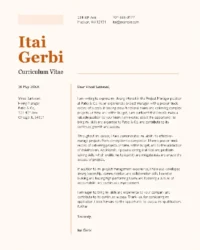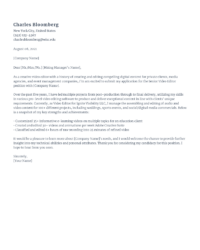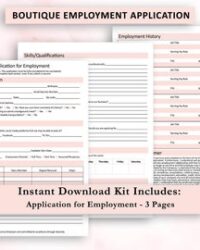Using distinctive application materials offers several advantages. They demonstrate initiative and creativity, qualities highly valued by many employers. A well-designed application can improve readability and highlight key accomplishments more effectively. Furthermore, a unique presentation demonstrates an understanding of visual communication and can indicate proficiency in design software, depending on the field. Ultimately, a memorable application increases the likelihood of standing out from the crowd and securing an interview.
This discussion will explore various aspects of developing impactful application materials, including design principles, software options, and best practices for showcasing relevant skills and experience creatively. Examples and resources will be provided to assist job seekers in crafting applications that effectively communicate their unique value proposition.
Key Components of Effective Application Materials
Developing impactful application materials requires careful consideration of several key components. These elements work together to create a cohesive and compelling presentation that showcases a candidate’s qualifications and personality.
1: Visual Hierarchy: A clear visual hierarchy guides the reader’s eye through the information, emphasizing key accomplishments and skills. This can be achieved through the strategic use of headings, font sizes, and whitespace.
2: Typography: Font choices contribute significantly to the overall impression. Selecting professional yet distinctive fonts enhances readability and reflects the applicant’s personal brand.
3: Color Palette: A considered color palette can evoke specific emotions and create a cohesive visual identity. Color should be used strategically to highlight important information and create a positive aesthetic.
4: Infographics and Data Visualization: Incorporating visual elements like charts and graphs can effectively communicate quantitative data and achievements, making them more engaging and easier to understand.
5: Layout and Structure: A well-organized layout ensures clarity and ease of navigation. Information should be presented logically and consistently across all application materials.
6: Personal Branding: Application materials should reflect the applicant’s unique skills and personality. This can be achieved through the use of a consistent visual style and the inclusion of personal projects or interests.
7: Content Tailoring: While a template provides a foundation, content must be tailored to each specific job application. Highlighting relevant skills and experience demonstrates a genuine interest in the position.
Strategic use of visual elements, thoughtful typography, and a tailored approach are essential for creating effective and memorable application materials that distinguish candidates and communicate their value proposition effectively.
How to Develop Distinctive Application Materials
Crafting compelling application materials requires a strategic approach that balances creativity with professionalism. The following steps outline a process for developing visually engaging and informative documents.
1: Define a Visual Identity: Establishing a consistent visual identity across all application materials ensures a cohesive and professional presentation. This involves selecting a color palette, typography, and graphic style that reflects personal branding and aligns with industry conventions.
2: Structure Content Strategically: Organizing information logically and using clear headings improves readability and emphasizes key qualifications. Prioritizing relevant experience and skills ensures the application aligns with the specific job requirements.
3: Leverage Visual Communication: Incorporating visual elements such as infographics, charts, and icons can enhance data presentation and make complex information more accessible. Visuals should be used purposefully to support and clarify written content.
4: Select Appropriate Software: Choosing the right software is crucial for executing the design effectively. Options range from traditional word processors with design capabilities to dedicated graphic design software, depending on the desired level of complexity.
5: Refine and Iterate: Reviewing and refining the design is essential for ensuring visual appeal and functionality. Seeking feedback from others can provide valuable perspectives and identify areas for improvement.
6: Maintain Accessibility: Design choices should prioritize accessibility for all individuals. This includes ensuring sufficient color contrast, using clear fonts, and providing alternative text for images.
A thoughtful combination of visual elements, strategic content organization, and appropriate software facilitates the creation of distinctive application materials that effectively communicate qualifications and leave a lasting impression.
Distinctive and visually engaging application materials provide a significant advantage in competitive job markets. By leveraging design principles, strategic content organization, and appropriate software, individuals can create impactful presentations that showcase their unique qualifications and capture the attention of potential employers. A thoughtful approach to visual communication, including careful consideration of typography, color palettes, and visual hierarchy, elevates application documents beyond standard formats, transforming them into compelling narratives that effectively communicate a candidate’s value proposition.
The strategic development of application materials represents an investment in professional advancement, increasing the likelihood of securing interviews and ultimately, achieving career goals. As the job market continues to evolve, embracing innovative approaches to self-presentation becomes increasingly essential for individuals seeking to stand out and make a lasting impression.


